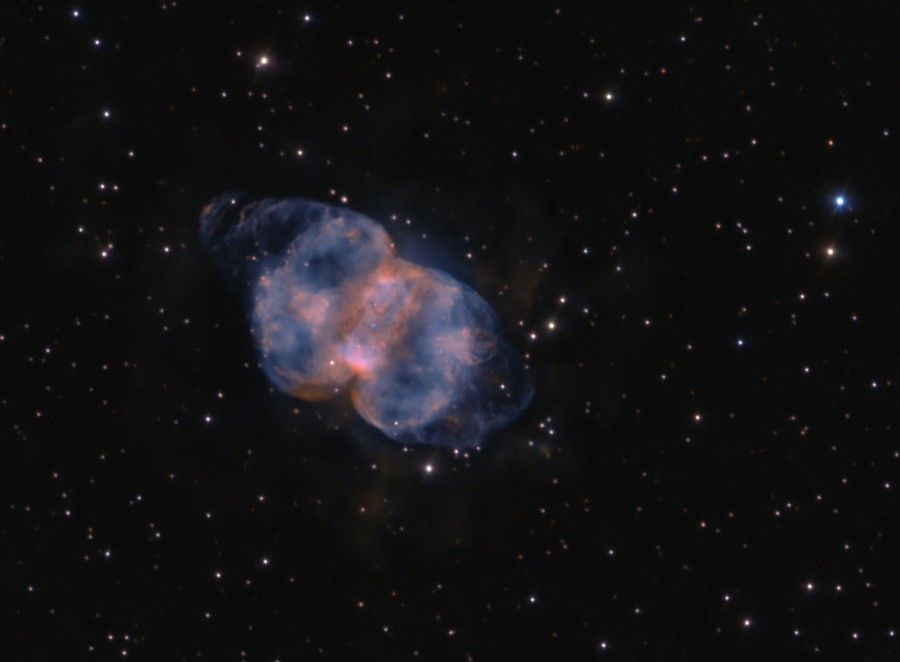(PhysOrg.com) -- Scientists in the US have solved the mystery of how peat mosses manage to get their spores high enough to catch the wind, discovering that they produce vortex rings of air, like miniature "mushroom clouds" to boost the spores along -- the first time plants have been shown to be capable of creating such rings.
The tip of each stalk contains from 20-250,000 spores in a spherical, waterlogged capsule that dehydrates on sunny days. As it dries out the capsule collapses in on itself to form a cylinder, with the air compressed inside it. When the air pressure reaches a critical point the capsule blows its top off, shooting spores and air upwards to reach the turbulent layer at about 10 cm high. The process takes under one hundredth of a millisecond.
The vortex ring is produced as the air trapped in the capsule explodes outwards. The leading edge pushes against the atmosphere but then rolls back to form a donut-shaped ring. Several animals are known to make vortex rings, but until now no plant has been known to do so. Dolphins produce water vortex rings; jellyfish and squid use water rings to push themselves along, the human heart pushes blood from one chamber to another using vortex rings, and of course humans who smoke can produce smoke rings.
Explosion of a Sphagnum palustre capsule. (Recorded at 10,000 fps with a 0.097 ms exposure; displayed at 15 fps.) A clear "mushroom cloud" vortex ring forms and reaches a nearly fixed width within 0.5 ms. Spores are carried upward within the vortex ring and its wake. Credit: Science, doi:10.1126/science.1190179
A vortex ring is a very efficient way to move through air or water because it moves as a single unit. The vortex ring formed by the exploding spore capsule enables the spores to keep together as they rise. Without the ring individual spores would slow down and disperse before reaching the turbulent layer, and most would fall back to the ground. Edwards said they had witnessed spore clouds reaching as high as 17 cm, but even the average height of 11 cm gets the spores well into the turbulence.The findings are published in today’s edition of the journal Science.Science journal Podcast: an interview with Dwight Whitaker on how Sphagnum mosses use "air guns" and vortex rings to aid reproductive success. Credit: Science, DOI:10.1126/science.1190179 More information: Sphagnum Moss Disperses Spores with Vortex Rings, Dwight L. Whitaker and Joan Edwards, Science 23 July 2010: Vol. 329. no. 5990, p. 406, DOI: 10.1126/science.1190179
And here is an astronomical example on the web from the very same day of publication the preceding item:
Credit & Copyright: Ken Crawford (Rancho Del Sol Obs.)
Explanation: "Nebula at the right foot of Andromeda ... " begins the description for the 76th object in Charles Messier's 18th century Catalog of Nebulae and Star Clusters. In fact, M76 is one of the fainter objects on the Messier list and is also known by the popular name of the "Little Dumbbell Nebula". Like its brighter namesake M27 (the Dumbbell Nebula), M76 is recognized as a planetary nebula - a gaseous shroud cast off by a dying sunlike star. The nebula itself is thought to be shaped more like a donut, while the box-like appearance of its brighter central region is due to our nearly edge-on view. Gas expanding more rapidly away from the donut hole produces the fainter loops of far flung material. The fainter material is emphasized in this composite image, highlighted by showing emission from hydrogen atoms in orange and oxygen atoms in complementary blue hues. The nebula's dying star can be picked out in the sharp false-color imageas the blue-tinted star near the center of the box-like shape. Distance estimates place M76 about 3 to 5 thousand light-years away, making the nebula over a light-year in diameter.
The final example from yesterday came from investigations of cellular geometry. It establishes how protein signalling uses negative curvature to "decide" when to proceed with meiosis.
As I have so often pointed out here, it is the alternation of positive spherical curvature to a negative horn shockwave form that necessarily serves as a defining overriding characteristic of physical, biophysical, and noetic "space."
The final example from yesterday came from investigations of cellular geometry. It establishes how protein signalling uses negative curvature to "decide" when to proceed with meiosis.
As I have so often pointed out here, it is the alternation of positive spherical curvature to a negative horn shockwave form that necessarily serves as a defining overriding characteristic of physical, biophysical, and noetic "space."



No comments:
Post a Comment